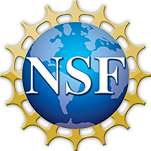Abstract
In 1973, Christian Anfinsen and coworkers noted that accelerated protein folding in intact cells and cell extracts suggested that a “disulfide interchange enzyme” might be present in vivo. This concept of catalyzed folding foreshadowed the discovery of ubiquitous protein chaperones. The chaperonin GroEL/GroES was identified serendipitously when GroE mutants of E. coli failed to grow bacteriophage λ and were also temperature sensitive. The GroEL/GroES proved to be a ubiquitous chaperone and heat shock protein in bacteria and eukaryotic organelles, with two back-to-back rings of seven subunits each, forming a cavity that enclosed nonnative proteins, capped by the separate GroES lid complex. Group II chaperonins were subsequently discovered in all of the Archaea and in the Eukaryote cytoplasm with a similar cage-like shape, only with a “built-in” lid instead of the GroES module of Group I chaperonins. These chaperones have been intensely studied for three decades and have provided deep insights into protein-folding mechanisms. Despite this, some aspects of chaperonin-induced protein folding remain controversial.
The shared architecture and sequence similarity of two classes of chaperonins implies that they share a common ancestor. A recently identified, deeply branching clade of archaeal-like chaperonins encoded in bacteria may shed light on the early history of chaperonins. This clade shares many molecular properties with Group II chaperones; however, their phylogeny suggests that they arose early in prokaryotic evolution and may represent a vestige of the common ancestor of Group I and Group II chaperonins.

